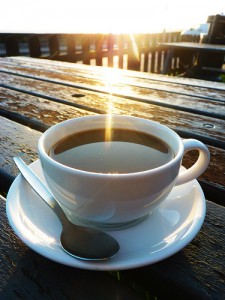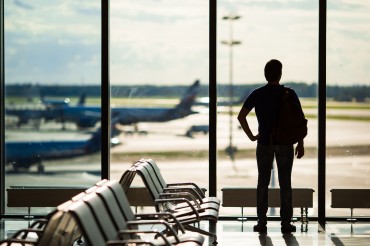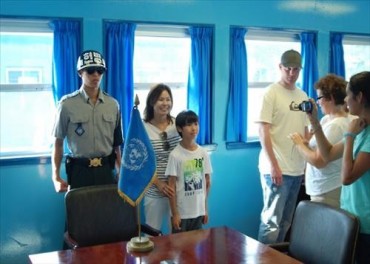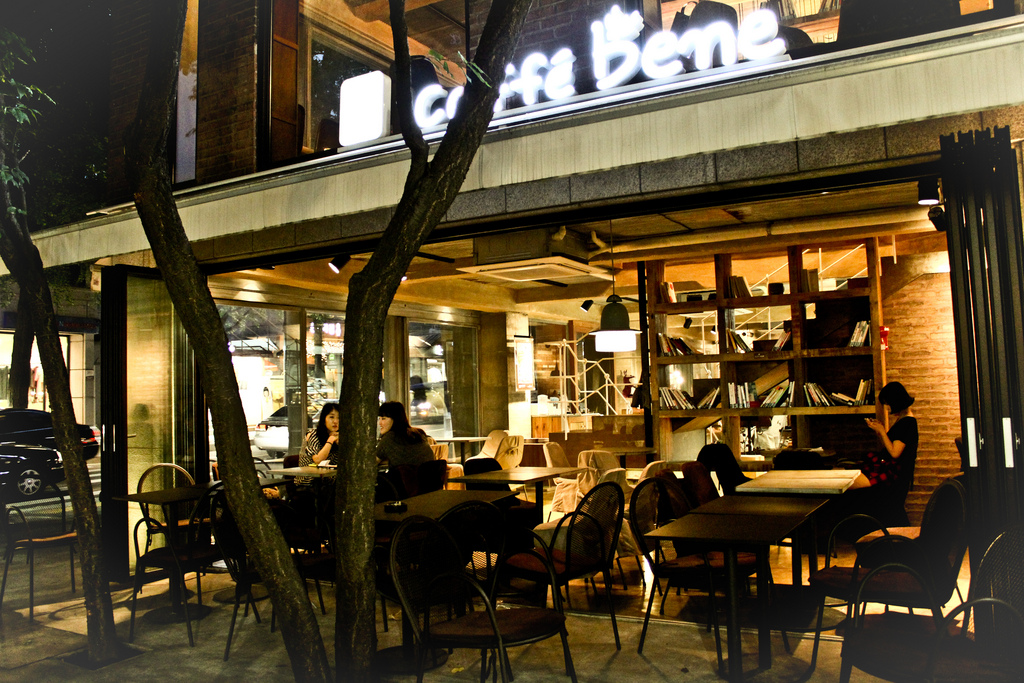
Streets in Seoul are awash with many specialty-coffee shops and You can see an increasing number of homegrown coffee franchises like Caffe Bene shown here in the picture (image: m j s photography at flickr)
SEOUL, South Korea, Oct 02 (Korea Bizwire) – Convenience stores, the super-clean shops selling every conceivable item from instant noodles to sanitary napkins 24 hours a day, have become fixtures of city streets in Korea since the early 1990s. Big convenience store franchisers such as CU, GS25, and Ministop have locations all over the country from Seoul to Busan and to Ulleung Island in the East Sea. As of the end of 2012, the number of such stores is estimated at 24,000, all of which leave lights on for customers even in the wee hours.
But these days there are some other stores one can see more often than the ubiquitous convenience stores. That’s none other than the specialty coffee shop. Somehow the speed with which the number of cafés has increased in this land of green tea is quite amazing. It was only 1999 when Starbucks opened its first Korean location near Ewha Woman’s University, which was also the first-ever specialty coffee house.
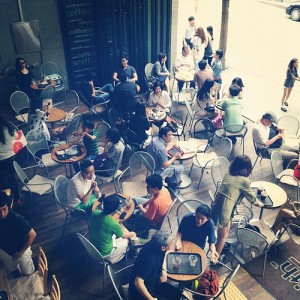
First-time visitors to Seoul may find it remarkable to see so many young women and men sitting out on cafés and sipping coffee.(image:Wootang01 at Flickr)
Up until the mid-2000s, most coffee shop operators preferred to stay within big cities, most notably in Seoul’s Gangnam where there were coffee places every 50 meters. But lately cafés are practically everywhere including small towns and countryside. For example, Caffé Bene, the homegrown brand, has 901 locations in Korea, plus 99 overseas stores as of August 2013. Starbucks is a runner-up with 500-plus locations nationwide. In total, there are as many as 15,000 caffeine stations all across the country including those run by large franchise stores and independent ones.
One can easily see how fast coffee consumption has grown by glimpsing a recently published report by Nonghyup Economic Research Institute “A Bowl of Rice versus a Cup of Coffee.” According to this report, Korea’s import volume for coffee bean has increased to 115,000 tons in 2012 from 107,000 tons in 2008. This is equivalent to a Korean adult drinking an average of 293 cups of Java a year. During the same four-year period, the market for coffee–including both instant and espresso-style coffee–has risen to 4.13 trillion won from 1.91 trillion won. At this rate, maybe in a few years the number of coffee shops will overtake that of convenience stores.
First-time visitors to Seoul may find it remarkable to see so many young women and men sitting out on cafés and sipping coffee. They may think, “Wow, Koreans are indeed coffee lovers!” But the truth is there are many more coffee drinkers who do it for the atmosphere and the joy of chatting with friends than for taste per se.
Honoré de Balzac, the 19th century French novelist famous for gulfing 50 cups of coffee a day, said, “As soon as coffee is in your stomach, there is a general commotion. Ideas begin to move…similes arise, the paper is covered. Coffee is your ally and writing ceases to be a struggle.” Possibly this is what’s happening in the stomach of Korean coffee drinkers. For them, coffee is something to be drunken everyday no matter what even if they miss lunch. Just like the number of smokers wouldn’t drop after a big hike in cigarette prices, the same will be true for coffee addicts. After all, coffee is as addictive as any other drug. We don’t call it the devil’s temptation for nothing.
These days, espresso bars are no longer exclusively for busy commercial streets in Seoul. One can find a “coffee row” in an unlikely place called the Anmok fishing port, Gangreung, a beach resort town 170 kilometers east of Seoul. Since the early 1990s, coffee aficionados began flocking to Anmok to open small coffee houses. Now the street has become a tourist spot on its own with a sizable number of coffee places boasting unique tastes with all different brewing techniques.
The city government has even capitalized on the fame to hold annual coffee festival in which as many as 200,000 visitors come to sample different coffees and tour museums, make-believe farms, and roasting plants within the city. To be held for four days between October 3 and 6, the fifth Gangreung Coffee Festival will feature 28 different programs including a sampling event for a variety of coffee beans all across the world. If you are one of the coffee fanatics, why not make a note of the festival dates and drive two hours to the east coast for a whiff of coffee?
Lifestyle (Follow us @Lifestylenews_Korea)


